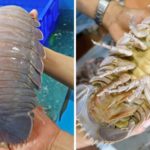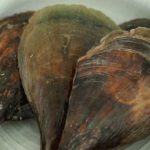For housewives near the coast, choosing seafood is no longer unfamiliar. However, for city mothers, choosing seafood can be a challenge. The price of squid varies depending on the freshness.
According to Thanh Phuong, “Usually, to reduce the selling price, traders soak the squid in water so that it expands. Once the squid is fresh and the cells begin to break down, they will soak it in water for about 5 hours.
By doing this, a 1kg squid will absorb about 1.5-1.7kg of water. When frying this type of squid, it will shrink and release water in the pan. Fresh frozen squid, on the other hand, will not have this phenomenon occur.”
Here is the specific way to choose squid that Thanh Phuong recommends for reference.
Live squid is transparent and has a clear appearance. If frozen in a freezer, it will turn a dark red color, fresh, with clear patterns. If frozen in a refrigerator, it will still have a slightly pink skin.
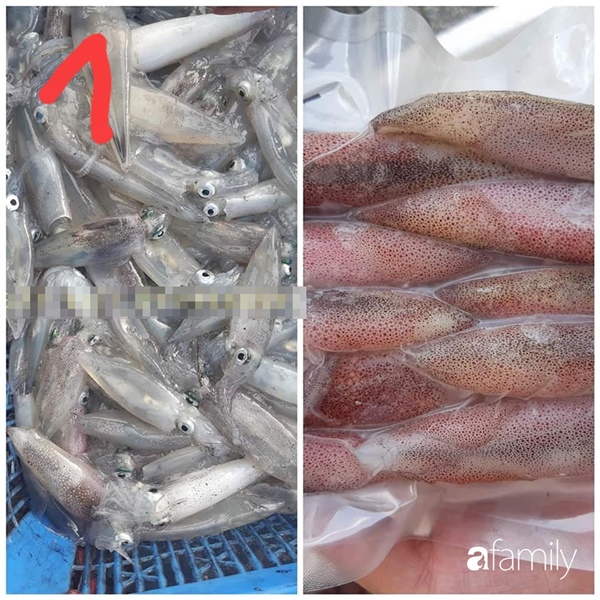
Once taken out of the water, it gradually turns white. If it is fully white when frozen, the squid will have a reddish streak.
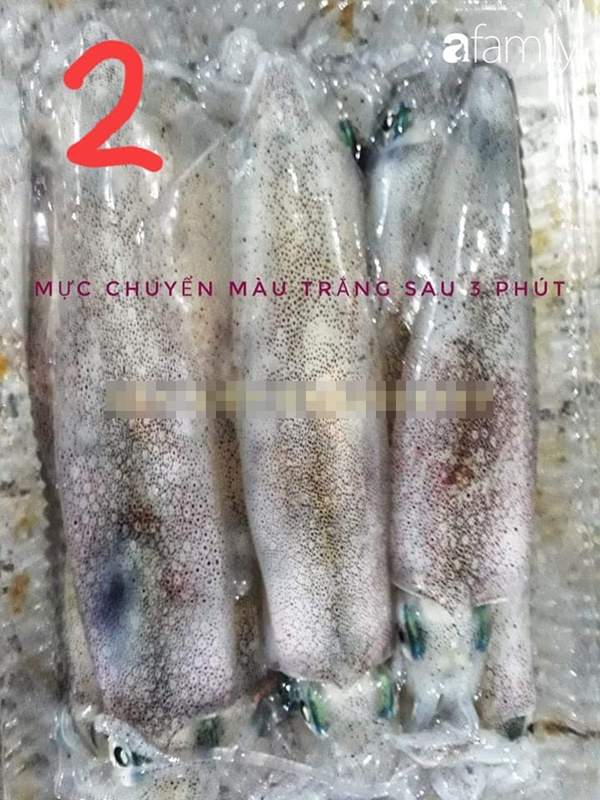 Afterwards, the squid will turn red, and the spots on its body will continually flash. When frozen, it will turn white, but it will have clarity, distinct brown spots, or slightly pink skin with bright eyes.
Afterwards, the squid will turn red, and the spots on its body will continually flash. When frozen, it will turn white, but it will have clarity, distinct brown spots, or slightly pink skin with bright eyes.
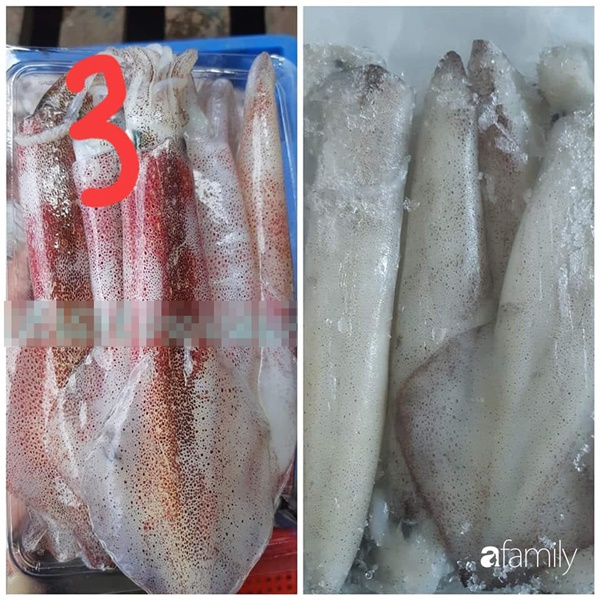
Then, the squid will gradually turn white and die. The spots on its body will no longer flash. When frozen at this stage, the flesh of the squid will be white and translucent, and it will have a brighter white color compared to fresh squid. When the flashing has just stopped, it is still considered fresh and delicious. People who do not know will think that the whiter the frozen squid is, the better it is, but that is not necessarily true. It will be white but lack clarity, and the spots on its body will not be clear.
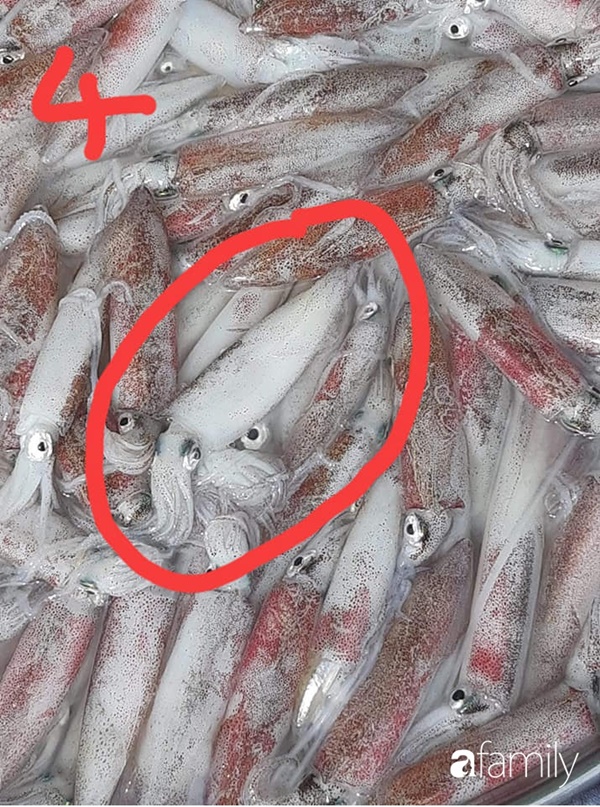
Next, the spots on the body of the squid will turn purple, and the skin of the squid will gradually turn red and purple. It should be noted that the color of the squid is a reddish purple and different from when it is fresh. The eyes become less bright and gradually turn purple.
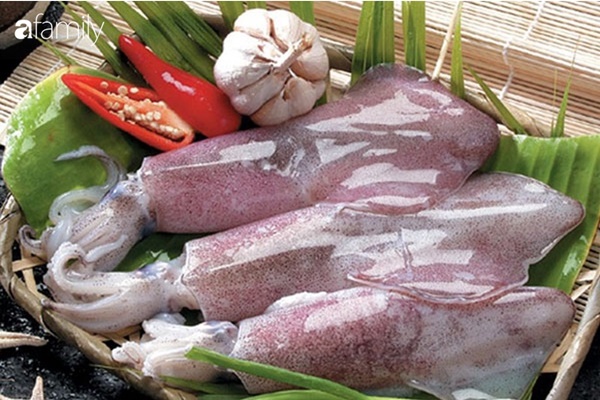
The skin becomes redder and the part that was originally white becomes whiter, but not as translucent as fresh squid. Personally, Thanh Phuong will never buy squid at this stage because the squid has been frozen for at least 2 days. The tentacles of the squid will gradually curl if touched or become soft.
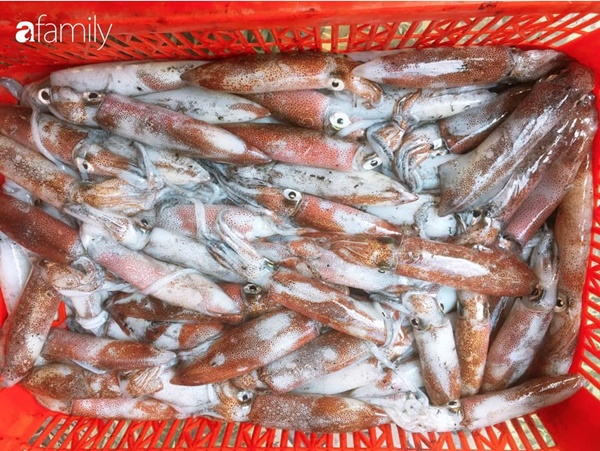
A fresh batch of squid just caught on the shore.
Thanh Phuong said, “When buying squid, pay attention to the eyes, tentacles, and spots on the squid to determine its freshness and quality. Fresh squid will have black or dark brown spots, while less fresh squid will have purple-red spots. Also pay attention to the color of the skin on the body and head to see if they are the same, whether the flesh has clarity, if the eyes are bright, and if the skin is reddish (flashing red) or white (flashing brown).
If you are not living by the sea, it is best to buy frozen squid and avoid buying squid that has been soaked in ice because this type of squid will not be kept fresh enough, causing it to deteriorate both nutritionally and in quality. Especially, fresh squid, when fried, will release a little liquid, and if frying on high heat, it is easy to burn.”
Note: Many people often hear that the squid should be soaked before cooking. This is unnecessary because it will drain the sweetness of the squid if the squid is still fresh. Fresh squid when eaten will not be fishy and will not release water.
According to Vietnamnet News




























